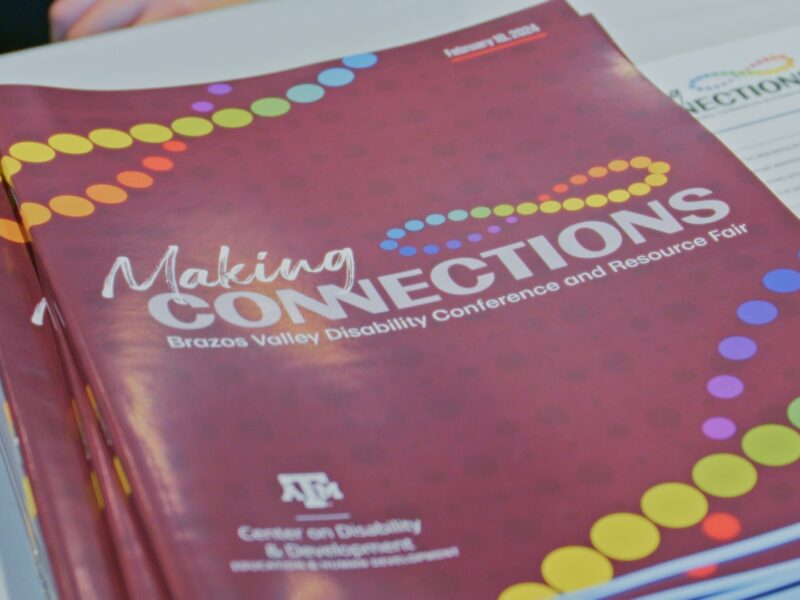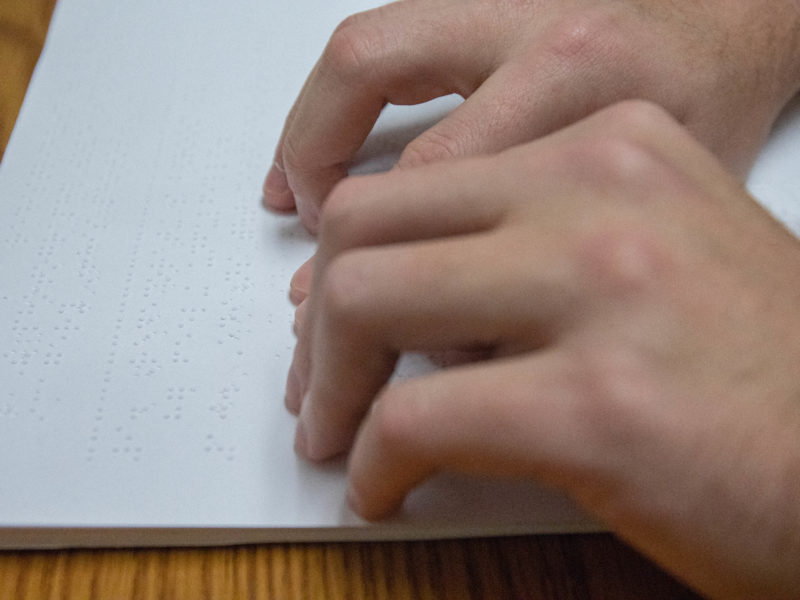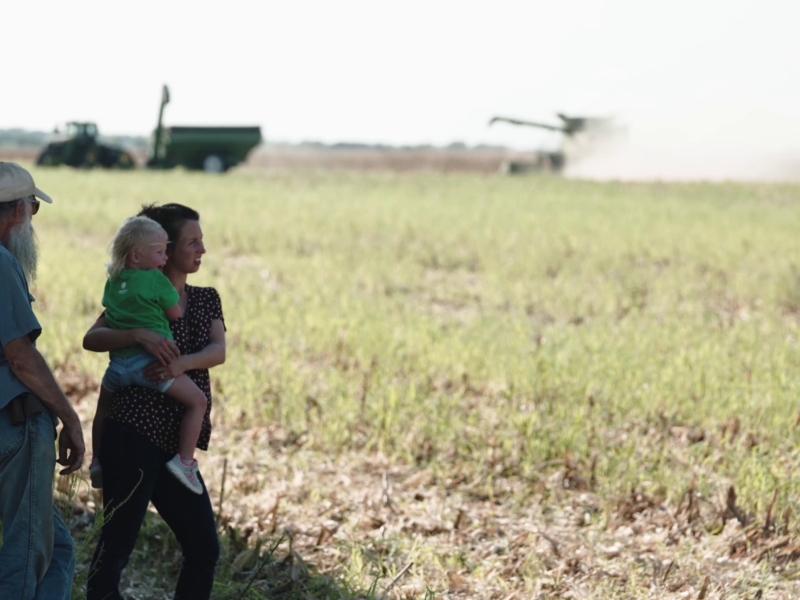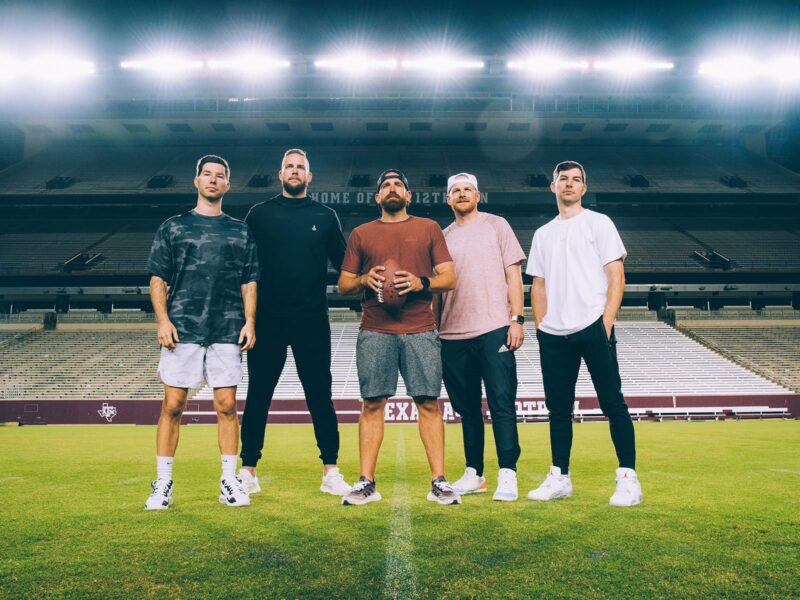Texas A&M Team Translates Thousands Of Pages Of Math Into Braille
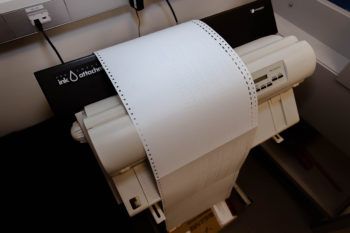
When Texas A&M University Mathematics Lecturer Vanessa Coffelt wanted to further accommodate coursework for students who are blind or visually impaired, the staff at Texas A&M’s Department of Disability Resources accepted the challenge. They worked closely with the Department of Mathematics to create a Braille translation — more than 2,300 pages worth.
“We don’t read math the way we understand math,” said Justin Romack, Disability Resources’ assistant director working with assistive technology in the Division of Student Affairs. “If you think literally about how math is written, even a simple equation such as ‘2 times 2’ on a sheet of paper looks like 2, the letter x and 2. If it’s not made accessible digitally, that’s how it’s read.”
Historically students with visual impairment have been unable to fully access STEM courses. “Math is an incredibly visual and spatially ordered medium — you’ve got blind students who are shut out from that because the technology hasn’t been there, it’s costly to produce, and it requires expertise,” Romack said. “It’s far more likely to see a blind student pushed toward the arts than it is to see people tackling barriers to accessibility for them in the math space.”
While Coffelt had successfully created an inclusive classroom that supported students with disabilities during her 23-year career, she had never taught a student who was legally blind until this year. “I had to rethink how I was going to teach the class,” she said. “There are so many different components and word problems in this course. It starts with matrices, which are a challenge to describe. It took more careful thought because I couldn’t just point.”
Coffelt reached out to Romack for help and together they identified needs for a Braille translation. The extensive list included the class’s 1,100-page textbook, lecture notes, exams, group assignments, and check-in questions that Coffelt uses to gauge student understanding.
Realizing the immense scope of the project and the quickly approaching start of the 2022 spring semester, Romack gathered a team of student workers to use a processing app to translate the materials to Braille. The complexity and overlapping concepts of the project called for sharp attention to detail and a thorough review of each translated chapter to ensure the math was coded correctly.
The translation project proved to be a work in progress as the semester got underway. “We got better at how we bound the volumes of content and created title sheets for each separately-bound volume,” Romack said. “It became a sub-project in developing standards for how we packaged the materials. It was artsy and creative and fun.”
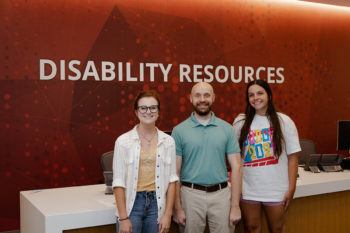
The team initially faced logistic challenges when using tractor-fed paper in the Braille embosser. “You have to tear individual sheets from one another — plus the tractor-feed strips on either side of the page — before you bind it,” Romack explained. “We had to punch our own holes for binding using a machine that helps us do comb binding, but there got to be so much content that the comb binding was inefficient.”
Eventually, the team started using Braille paper that was already punched for three-ring binders. “We just started putting this massive volume of content in big, bulky binders,” Romack said. “Oh, the things we learned.”
The Braille project’s roots extend back to 2018 when Texas A&M’s Department of Mathematics worked with the university’s Center for Teaching Excellence to create open educational resources for two foundational math classes. As part of the process, the faculty focused on identifying and removing barriers, ranging from academic to financial to accessibility, which students might encounter.
“As a teacher, one of the things I find most fulfilling is to help a student find joy in a subject that I love,” said Coffelt. “Because Texas A&M requires every student to have six hours of math credit as a minimum, it’s important that as a department, we’re there to support and serve all students at Texas A&M because they all need math.”
To ensure that it considered all accessibility issues, the department invited Romack to join these discussions. “When we produce course materials with accessibility in mind, we know that we could produce it today to be accessible, but we need to ensure it is flexible and adaptable to adjust to any accessibility need that may pop up down the road, like Braille production,” Romack remembers telling the faculty. “Just because we don’t have a blind student in the class right now doesn’t mean that we won’t later.”
Adding Up the Benefits
For the students on the project team, this work experience provided profound lessons on commitment and teamwork. “I was definitely intimidated by this project at first,” said Sarah Huggins ’24, who is majoring in psychology with a creative studies minor. “My main task before the Braille book was to answer phones, so working with books wasn’t really my strong suit.” Initially I spent more than two days working on one chapter. At the time, it was just me and one of my other coworkers spearheading the project, so we really leaned on each other during those frustrating days.”
As more student workers began to assist with the project, a powerful sense of collaboration developed. “Working on this project meant that everyone had to communicate about which chapters were completed, unfinished or needed to be started,” said Haley Jouett ’24, a biomedical sciences major from Poetry, Texas. “This led to a new system in our department in which we created a spreadsheet that included who completed which tasks in different parts of the book. Overall, this allowed us to grow as a team and to build connection.”
Huggins agreed that the project helped her understand the power of working with others. “This experience definitely taught me the importance of leaning on your teammates because you can’t do everything on your own,” the San Antonio native said. “Sometimes someone else can do it better than you, and that’s OK.”
Coffelt, who met weekly with Romack throughout the process, was impressed with the Aggie team’s quality of work and speedy output. “Working with Justin and his team was a wonderful experience,” she said. “They did amazing work at an amazing speed, converted graphs and figured out how to translate the math into something understandable in Braille. This material is not changing for a couple of years, so we are really opening the doors to help multiple students.”
To support Aggies with disabilities, contact Assistant Director of Development Sarah Hamilton ’22 at shamilton@txamfoundation.com or 979-458-1689 or donate online to the Disability Resources Improvement Fund at give.am/DisabilityResourcesFund.
Media contact: Justin Romack, jromack@tamu.edu, 979-845-1637
